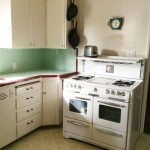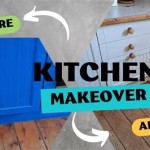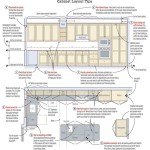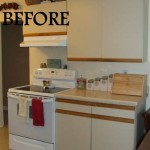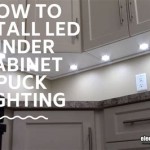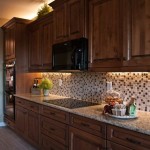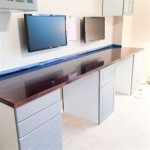Kitchen Cupboard Door Resurfacing: A Comprehensive Guide
The process of kitchen cupboard door resurfacing is a renovation technique focused on improving the appearance and functionality of kitchen cabinetry without undertaking a complete replacement. This approach offers a cost-effective and environmentally conscious alternative to installing entirely new cabinets. Resurfacing typically involves replacing or refinishing the visible surfaces of the cabinet doors and drawer fronts while maintaining the existing cabinet boxes or frames. This can significantly transform the aesthetic of a kitchen, breathing new life into a space without the extensive demolition, time commitment, and expense associated with full cabinet replacement.
The decision to resurface cupboard doors often hinges on the condition of the existing cabinet boxes. If the cabinet boxes are structurally sound, level, and meet current functional needs, resurfacing presents a viable option. Conversely, if the cabinet boxes are damaged, warped, or otherwise compromised, a complete cabinet replacement might be the more prudent and practical solution. The scope of the project, budget constraints, and desired aesthetic outcome are all critical factors to consider when evaluating whether resurfacing is the right approach.
Various techniques and materials are employed in cupboard door resurfacing, each offering unique advantages in terms of cost, durability, and visual impact. These options range from applying new laminates and veneers to painting or refacing existing doors. The selection of the most appropriate method depends on the existing door material, the desired finish, and the homeowner's budget and preferences. Understanding the nuances of each technique is crucial for achieving a successful and long-lasting result.
Understanding the Benefits of Cupboard Door Resurfacing
Resurfacing kitchen cupboard doors offers a multitude of advantages over a complete cabinet replacement. One of the most significant benefits is the cost savings. Resurfacing is typically significantly less expensive than replacing entire cabinets, as it avoids the cost of new materials, extensive labor, and potential modifications to the kitchen layout. This makes it an attractive option for homeowners seeking to update their kitchen on a tighter budget.
Another key advantage is the reduced disruption to the household. Replacing cabinets involves a more extensive demolition process, which can generate considerable dust, noise, and inconvenience. Resurfacing, on the other hand, minimizes disruption as it typically requires less invasive procedures. In many cases, the existing cabinet boxes remain in place, and the new doors and drawer fronts are installed with minimal disturbance to the surrounding area. This allows homeowners to continue using their kitchen for a larger portion of the renovation period.
Furthermore, resurfacing is a more environmentally friendly option. By retaining the existing cabinet boxes, it reduces the amount of waste sent to landfills. This aligns with sustainable renovation practices and contributes to a more environmentally responsible approach to home improvement. Reusing existing materials minimizes the demand for new resources, thereby reducing the carbon footprint associated with cabinet manufacturing and disposal.
Exploring Different Resurfacing Techniques
Several distinct techniques can be used to resurface kitchen cupboard doors, each with its own set of characteristics and suitability. Painting or repainting existing doors is a common and relatively inexpensive option. This involves preparing the existing door surface by cleaning, sanding, and priming it before applying several coats of paint. This method is best suited for doors that are structurally sound but require a fresh coat of color to update their appearance.
Another popular technique is applying new laminate or veneer to the existing door surface. Laminate is a synthetic material made from layers of paper or fabric bonded together with resin. It offers a durable and water-resistant surface that is available in a wide range of colors and patterns. Veneer, on the other hand, is a thin layer of real wood that is glued to the existing door surface. It provides a more natural wood look and feel compared to laminate. Both laminate and veneer require careful application and edge banding to ensure a seamless and professional finish.
Refacing is another method that involves replacing the entire door and drawer front with new ones while retaining the existing cabinet boxes. This option offers a broader range of design possibilities, as homeowners can choose from a variety of door styles, materials, and finishes. Refacing typically involves purchasing new doors and drawer fronts from a cabinet manufacturer or supplier and installing them on the existing cabinet frames. This method can significantly transform the aesthetic of the kitchen without the expense and disruption of a full cabinet replacement.
Vinyl wrapping is also an option. A self-adhesive vinyl film can be applied to the doors to give them a new aesthetic. The vinyl comes in various colours and textures, and is designed to adhere to the existing door surface. This option is cost-effective and can provide an instant transformation, but requires careful application to ensure a smooth, bubble-free finish.
Steps Involved in the Resurfacing Process
The resurfacing process typically involves a series of well-defined steps to ensure a successful and aesthetically pleasing outcome. The initial step is a thorough assessment of the existing cabinets to determine their structural integrity and suitability for resurfacing. This involves inspecting the cabinet boxes for any damage, warping, or misalignment. The doors and drawer fronts are also assessed for any signs of wear and tear, such as cracks, chips, or peeling finishes.
Once the assessment is complete, the next step is to prepare the existing cabinets for resurfacing. This involves removing the doors and drawer fronts, cleaning the cabinet boxes, and sanding any rough or uneven surfaces. The cabinet boxes may also need to be primed to ensure proper adhesion of the new finish. Any hardware, such as hinges and handles, is typically removed at this stage as well.
The next stage is the application of the chosen resurfacing material. For painting, this involves applying several coats of paint, allowing each coat to dry thoroughly before applying the next. For laminate or veneer, the material is carefully applied to the existing door surface using adhesive and pressure. Edge banding is then applied to the edges of the doors to create a seamless and professional finish. For refacing, the new doors and drawer fronts are installed on the existing cabinet frames using new hinges and hardware.
Finally, the hardware is reinstalled, and the doors and drawer fronts are properly aligned and adjusted to ensure smooth operation. A final inspection is conducted to identify and address any imperfections or inconsistencies in the finish. The kitchen is then cleaned, and any debris or materials are removed, leaving a newly resurfaced kitchen that is both functional and visually appealing.
Each door must be sanded down properly and prepared before any painting or resurfacing can be carried out. This is a crucial step to ensure that the new finish adheres properly and that there are no blemishes that stand out. If using multiple coats, each coat must be allowed to dry fully before the next is applied. This will ensure a smooth, even finish.
If handles or other hardware are being replaced, careful measurements must be taken to ensure new hardware fits correctly in the old holes or that new holes are drilled accurately. Misaligned hardware can detract from the overall finish of the resurfaced kitchen.
The overall success and longevity of the resurfacing project depend on the quality of the materials used and the care taken during the installation process. Resurfacing is a more economical and convenient approach than ripping out all old cabinets, and replacing them with new ones.

Cabinet Refacing Process And Cost Compared To Painting

Best Kitchen Cabinet Refacing For Your Home The Depot

Delta Cabinetry Of New Orleans Cabinet Refacing

How Does Kitchen Cabinet Refacing Work

How To Resurface Kitchen Cabinets 2024 Guide Forbes Home

Kitchen Cabinet Refacing Makeover A Homeowner S Experience

Kitchen Cabinet Refacing N Hance Wood Refinishing Of Franklin Murfreesboro

Cabinet Refacing Vs Painting Which Is Right For You

6 Popular Cabinet Door Styles For Kitchen Refacing N Hance

Kitchen Cabinet Refacing Options And Tips
Related Posts

